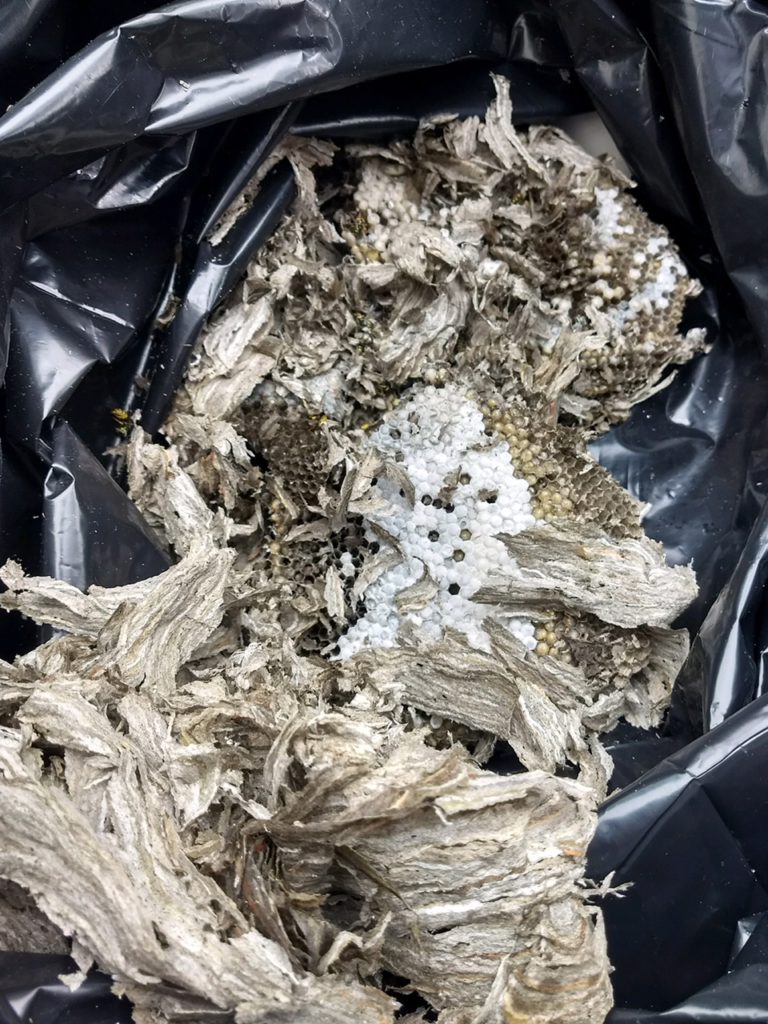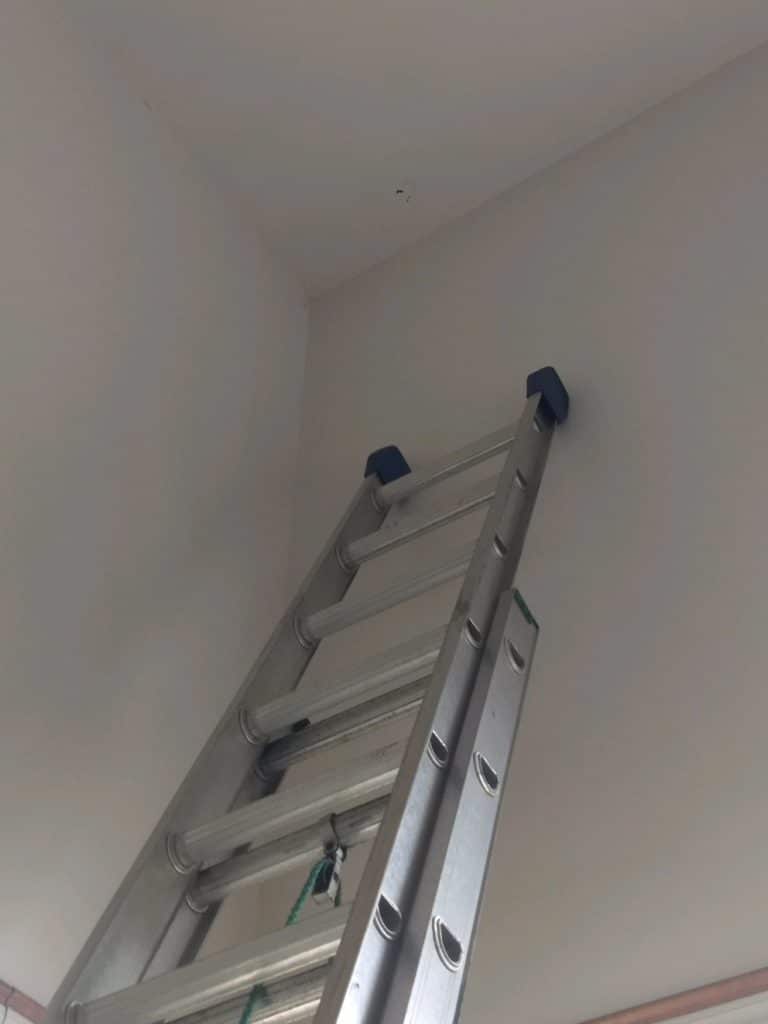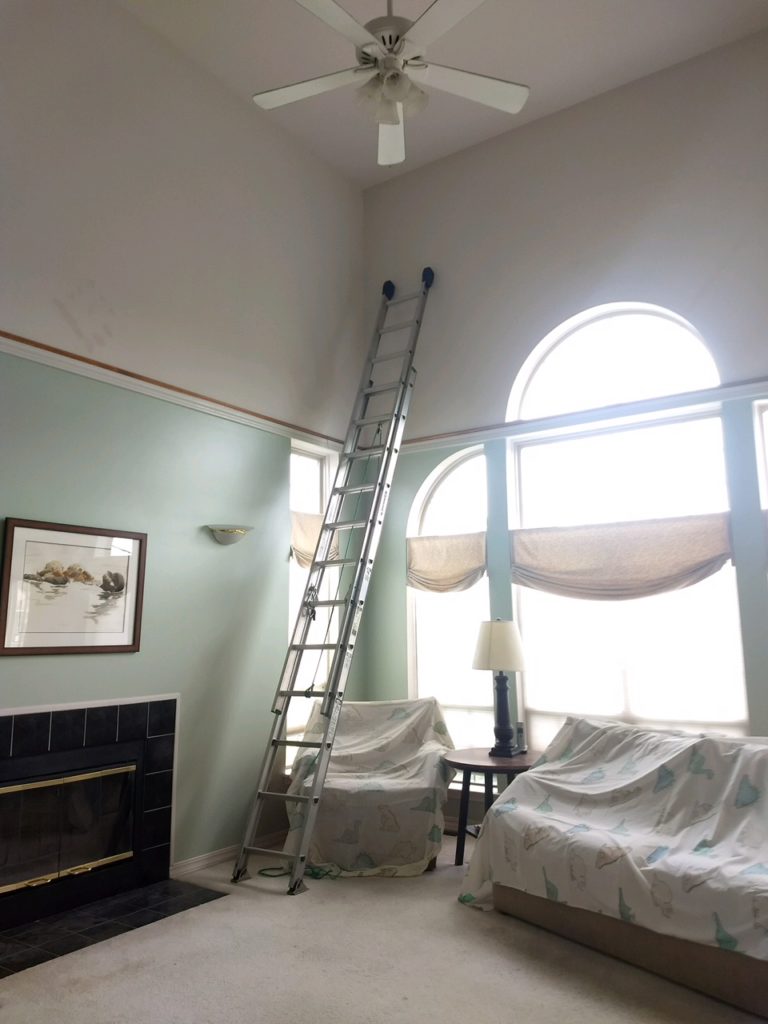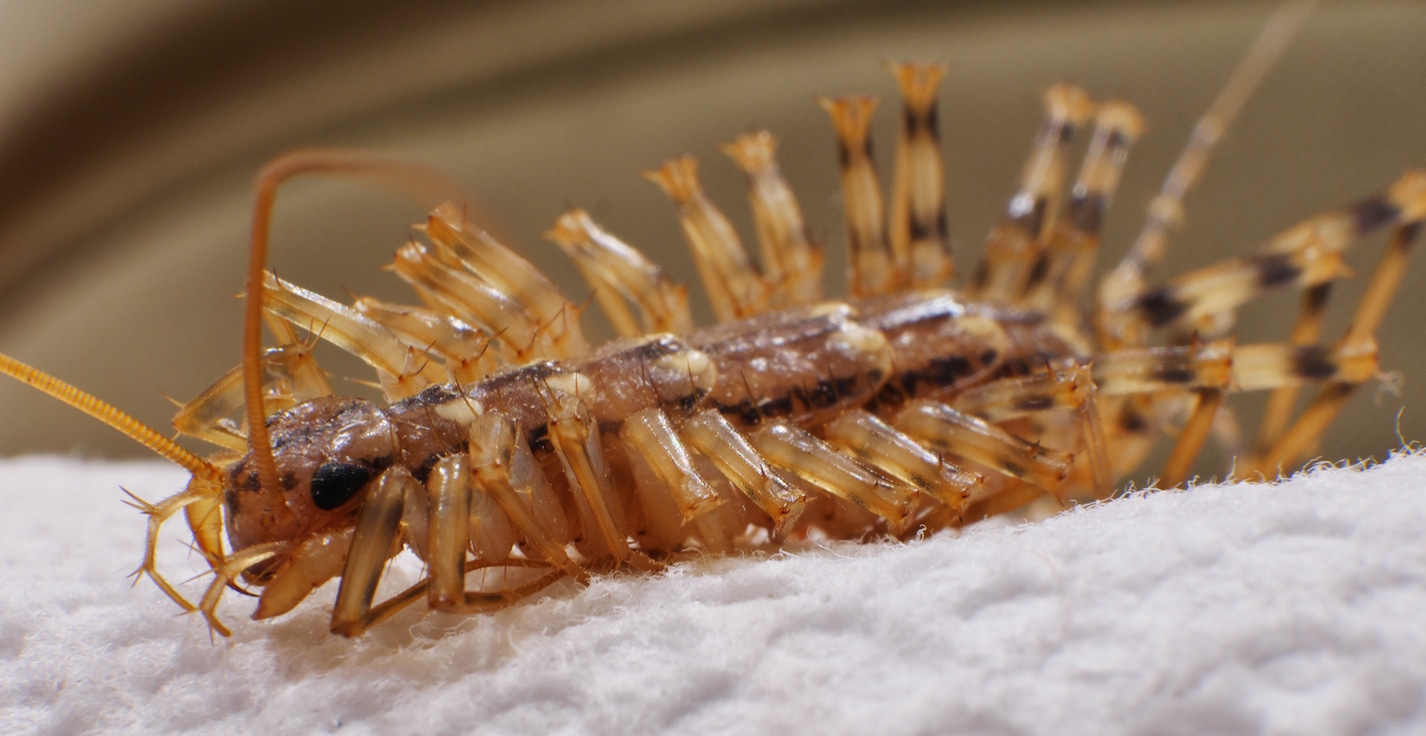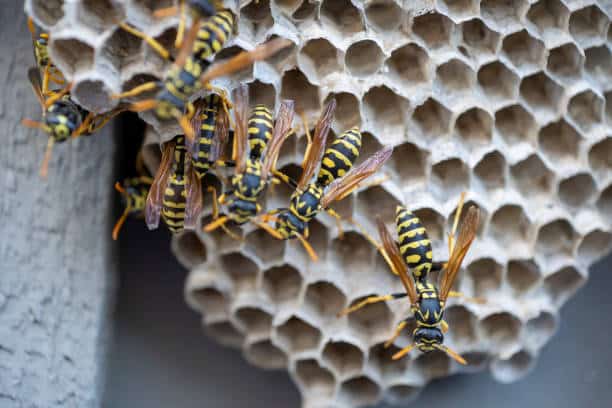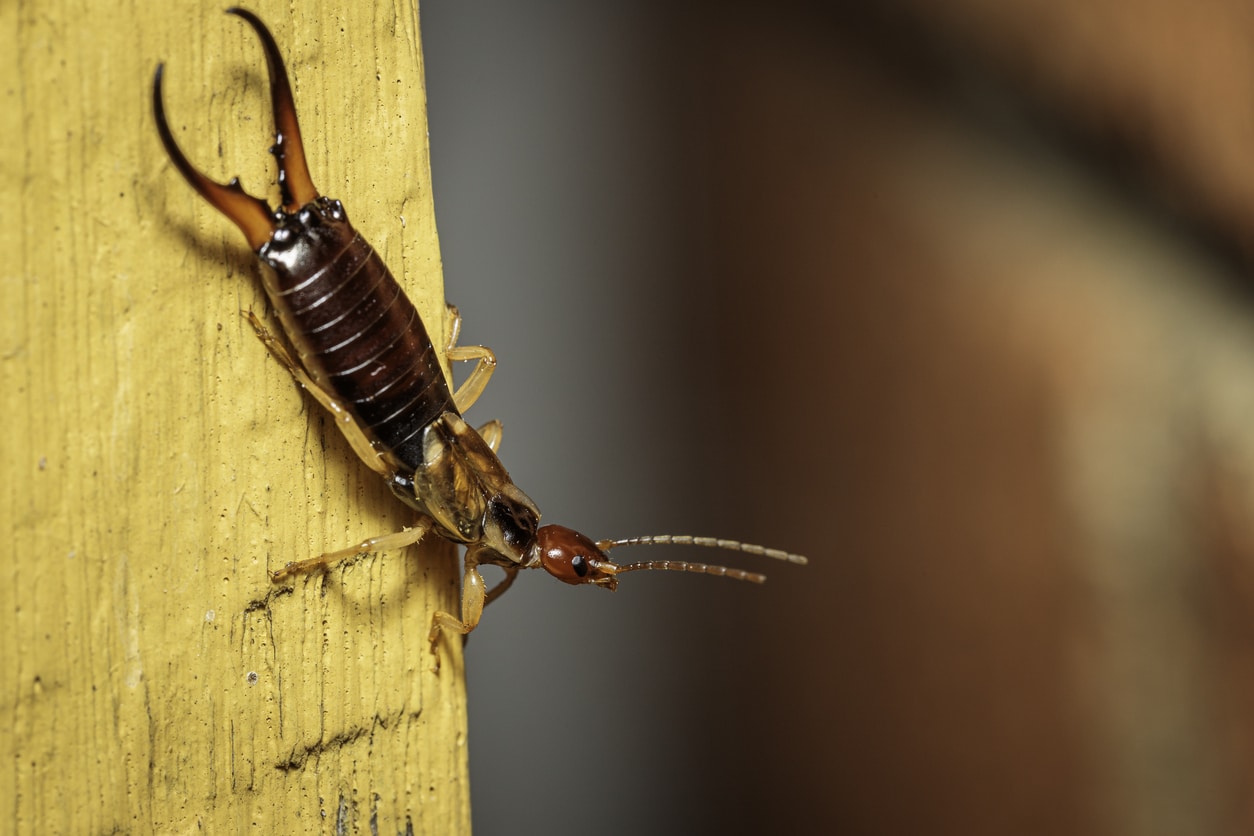The holidays bring cozy gatherings, festive decorations, and plenty of warmth indoors. But it’s not…
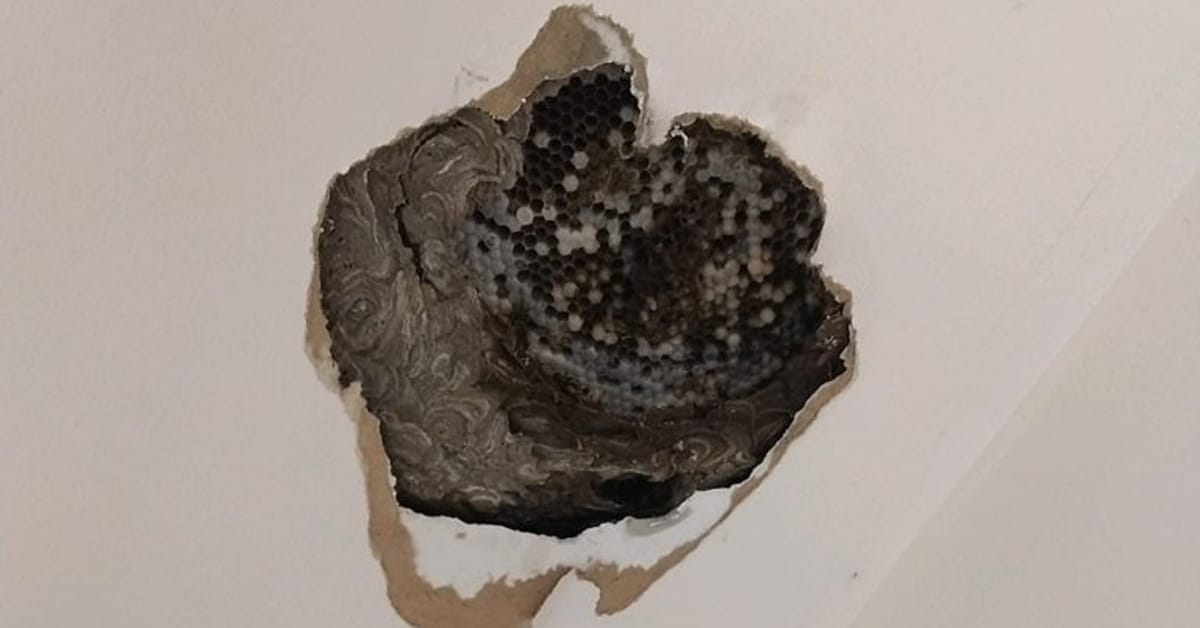
Yellow Jacket Removal Ypsilanti
One of the most alarming pest control problems for any homeowner is the unexpected discovery of stinging insects building a hive inside the walls or ceiling of a home. German yellow jackets are particularly notorious for this. Their capacity for creating massive nests that can expand to fill spaces of astonishing size.
In a home, yellow jackets get access to a ceiling space or wall void and begin constructing a nest. The construction of the nest is itself a destructive act; yellow jackets actually create their nests by chewing tiny fragments of drywall, mixing the material with their saliva, and then use the mixture as building material. For this reason, the presence of a yellow jacket nest can often be identified by a kind of crackling, crunching sound—almost like the sound of Rice Krispies snapping. This crackling noise is the sound of the yellow jackets picking away at the dry wall and constructing their nest.
In the advanced stages of nest building, the yellow jacket activity begins to degrade the integrity of the dry wall itself. Besides crackling, a moist, soft spot will appear near the site of the nest. This indicates the dry wall has become very thin. There is a danger the yellow jackets could break through into the living area, which becomes an immediate crisis.
Our pest tech Shawn was recently called out to a home in Ypsilanti to deal with a yellow jacket nest in the ceiling. The homeowners had been hearing the standard crunching noise in the ceiling of a bedroom for some time and finding stray yellow jackets about the home. After making sure the rooms furniture was covered, Shawn set up his ladder and prepared to open the ceiling to extract the nest.
Once the room was prepped, Shawn donned the appropriate personal protective gear (because those yellow jackets aren’t going to be happy to see him!). He first used a drill to make some holes, which would serve as access openings for the pesticide application. Once the holes were drilled, Shawn made an application of PT 565 Plus, an aerosol based product that is a great pesticide for enclosed hives because it is a gas that expands as it is applied, so that it is able to work its way through the hundreds of little cavities that comprise the yellow jacket nest, thus effectively wiping out the hive.
After making an application of pesticide to a stinging insect nest, it is good to wait awhile to ensure that the pesticide has sufficient time to take effect before attempting to remove the nest. While Shawn waited, he covered the holes with duct tape to prevent any yellow jackets from escaping. After a few minutes, he might make another application to ensure it is safe to remove the nest.
Shawn cut away the drywall to get access to the nest. As he suspected, it was very large, as you can see from the picture at left. Now all that is left to do is remove and the nest and dispose of it. It is important that yellow jacket nesting material be completely removed after treatment; old yellow jacket hives left behind that re-attract new groups of yellow jackets in the future.
The nesting material is removed. Shawn places it in a thick garbage bag for disposal. The residents can use their bedroom again without fear of a swarm of angry yellow jackets breaking through the dry wall at any moment.
If you have any issues with stinging insects or any pest or wildlife issue, give Creature Control a call at 1-800-441-1519. We have technicians servicing all or parts of sixteen counties in Michigan.
